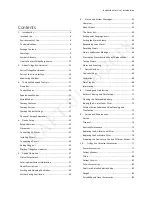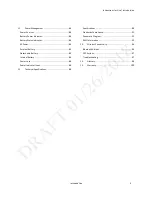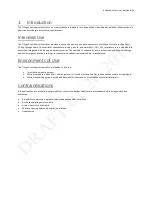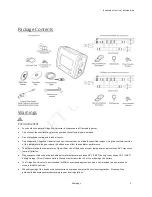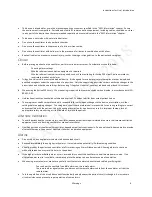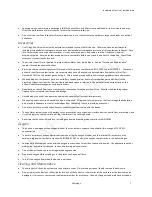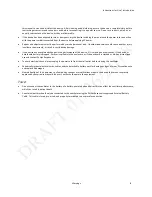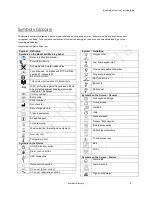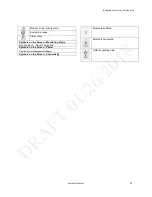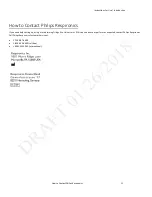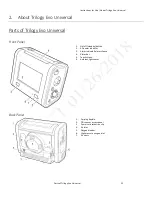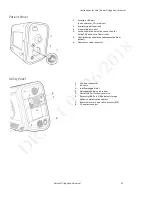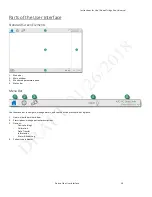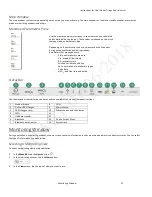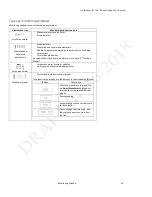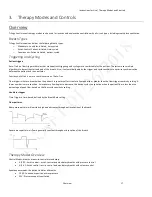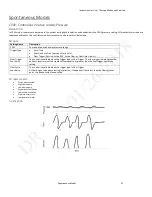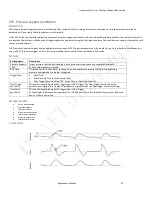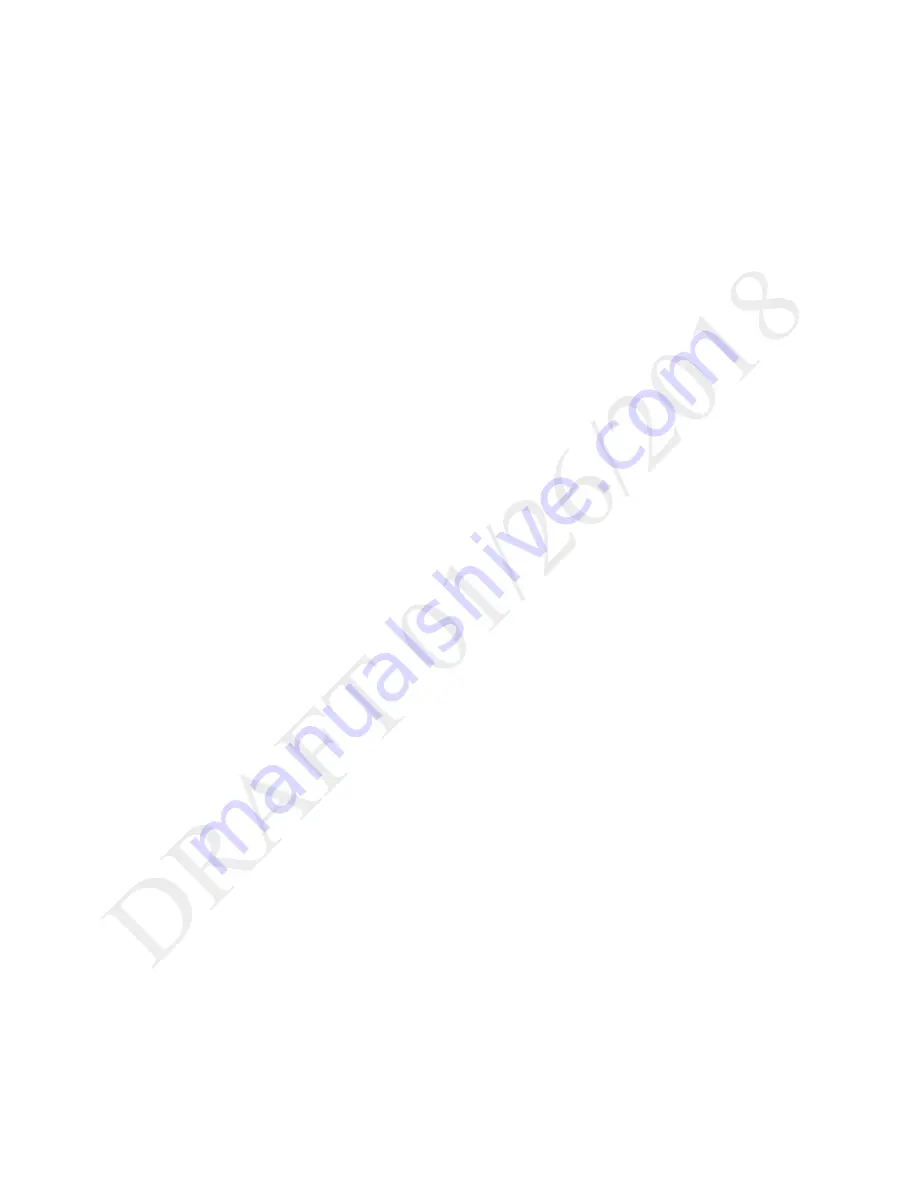
Instructions for Use | Introduction
Warnings
7
•
Speaking valves, heat moisture exchangers
(HMEs),
humidifiers, and filters create additional circuit resistance and may
affect the performance of alarms chosen for circuit disconnect protection.
•
Do not set the Low Peak Inspiratory Pressure alarm too low, or the system may not detect large circuit leaks or a patient
disconnect.
Accessories
•
Use Trilogy Evo Universal only with accessories intended for use with this device. Otherwise, adverse performance
including increased electromagnetic emissions or decreased electromagnetic immunity of this equipment can occur. For a
list of accessories, such as patient interfaces, circuits, exhalation ports, and cables, see the Trilogy Evo Universal
accessories guide. Ensure accessories and parts are compatible before you connect a patient to the device. Consult the
accessory’s instructions before use.
•
The air-inlet foam filter is required to protect the ventilator from dirt and dust. See the “Service and Maintenance”
chapter for maintenance instructions.
•
Be certain that any breathing system filter used with this device complies with ISO 23328-1 and ISO 23328-2. · To prevent
patient or ventilator contamination, we recommend you use a Respironics-
approved main flow bacteria filter (Part
Number 342077) on the patient gas outlet port. Filters not approved by Respironics may degrade system performance.
•
When adding any components
(such as humidifiers, speaking valves, heat moisture exchangers, and filters) to the
breathing system, consider the flow resistance and dead space in relation to the potential for adverse effects on the
patient’s ventilator management and device alarms.
•
Nebulization or humidification can increase the resistance of breathing system filters. Monitor the breathing system
frequently for increased resistance and blockage.
•
Gas added by the use of a pneumatic nebulizer can adversely affect ventilator accuracy.
•
When using a passive circuit an exhalation port is required. At low expiratory pressures, the flow through the exhalation
port may be inadequate to clear all exhaled gas from the tubing – some rebreathing may occur.
•
Do not use antistatic or conductive hoses or conductive patient tubing with the device.
•
The ventilator system (used with patient circuit accessories, such as patient interface devices, humidifiers, water traps, an
d
circuit tubing) may contain small parts
that could result in a choking hazard.
•
Be certain that any humidifier in use, including any heated breathing tube, complies with ISO 8185.
Oxygen
•
This device is equipped with an oxygen blender that can deliver oxygen to the patient within a range of 21-100%
concentration.
•
To ensure accuracy of oxygen administration when using the oxygen blender, use the internal FiO
2
accessory or an
external oxygen monitor that complies with ISO 80601-2-55 to verify the oxygen concentration in the delivered gas.
•
Substantial leaks may reduce the inspired oxygen concentration to less than the expected value. Use appropriate patient
monitoring, as medically indicated, such as an alarming pulse oximeter.
•
Do not connect the device to an unregulated oxygen source.
•
Do not use oxygen while smoking or in the presence of an open flame.
•
Turn off the oxygen flow when the device is not in use.
Cleaning and Maintenance
•
To avoid electric shock, do not remove the enclosure cover. Only service personnel should remove the enclosure.
•
Do not immerse the device or allow liquids into any of the controls or the interior of the enclosure as the device may be
damaged. If this occurs, contact your equipment provider for assistance. Use only the agents and methods described in


